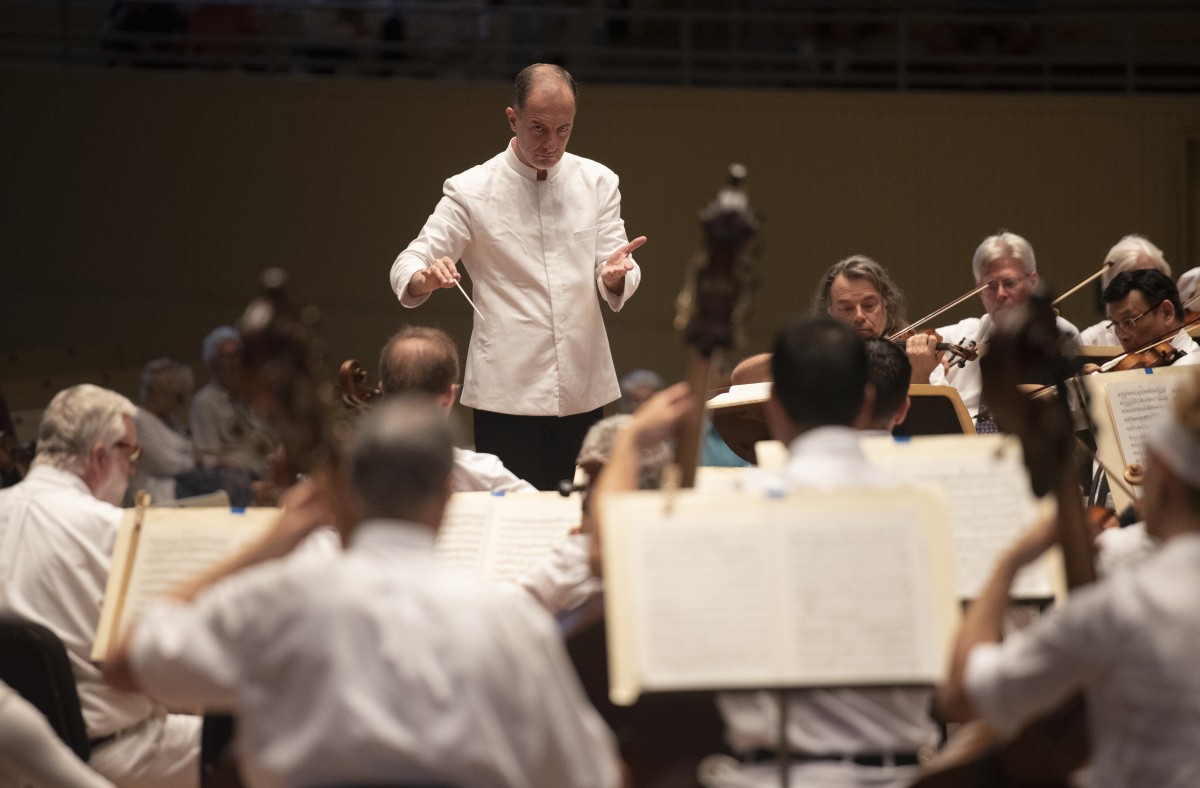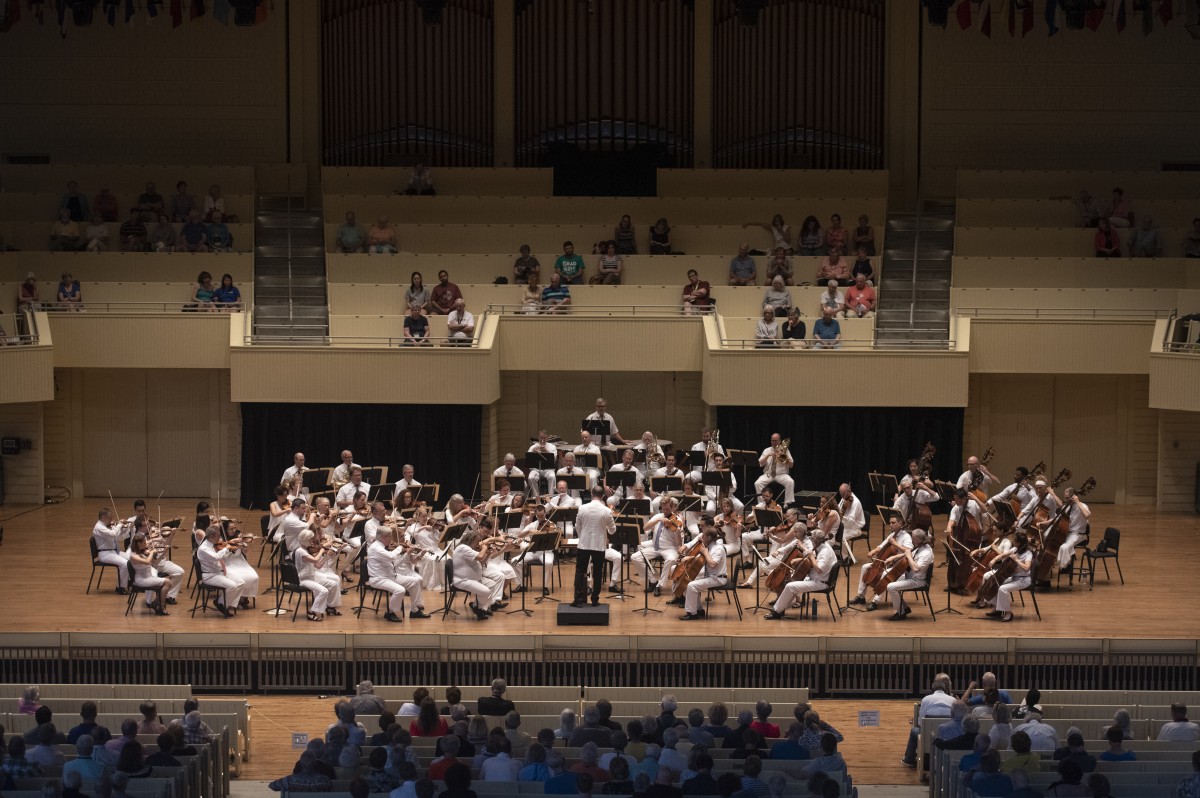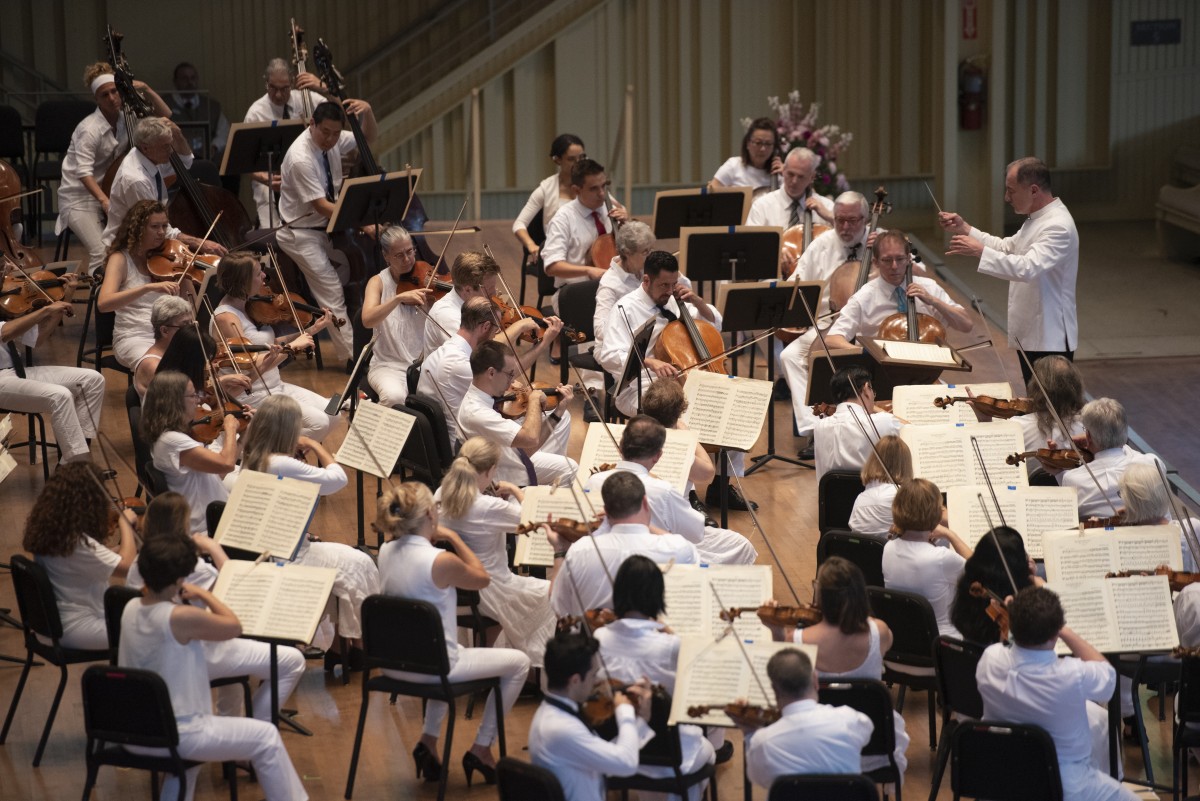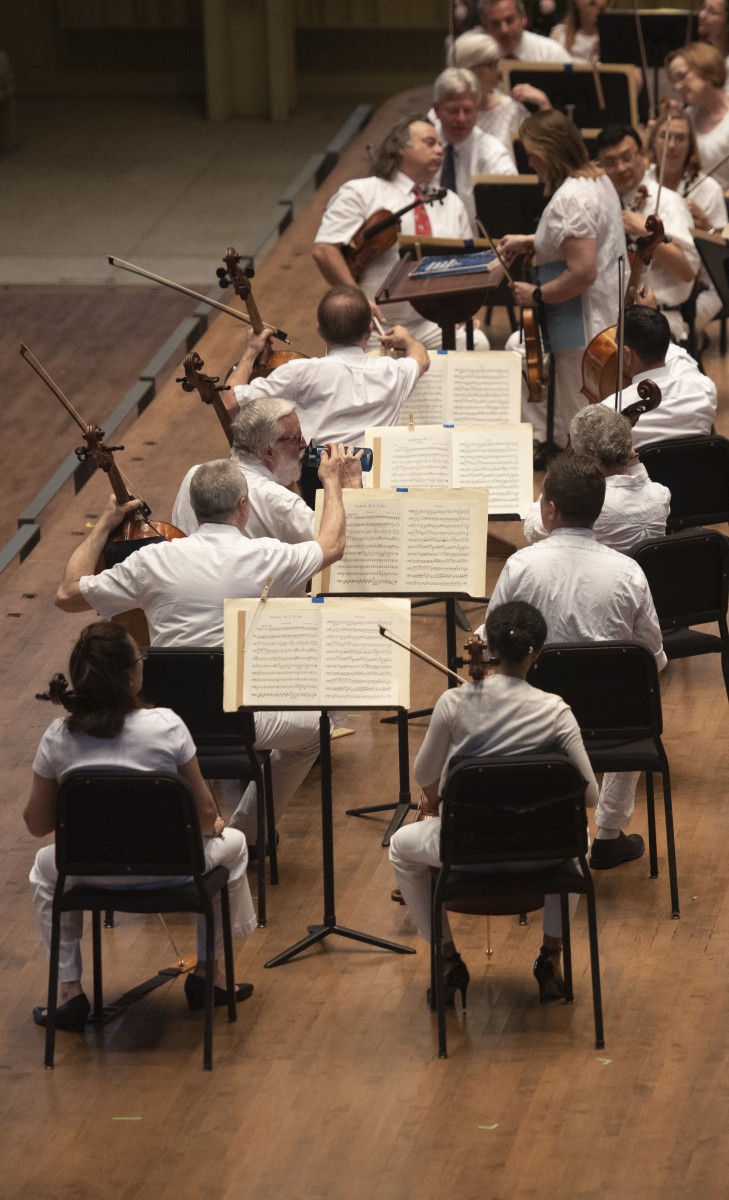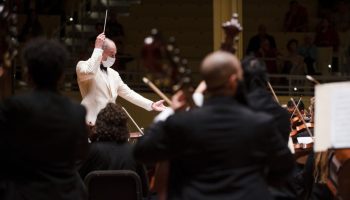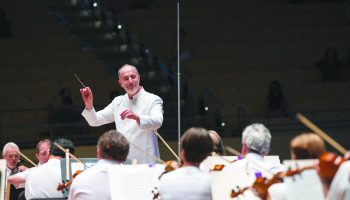Review By Johanna Keller:
A pair of beloved Romantic symphonic masterworks — by Franz Schubert and Johannes Brahms — were performed back-to-back without intermission to close out the first week of Chautauqua Symphony Orchestra’s 90th season. The news of the night was that about half the concerts this year will be intermission-free, due to popular demand from the audience, a change announced by Deborah Sunya Moore, vice president of performing and visual arts, in her opening remarks from the stage.
On a more serious note, Moore also paid tribute to Peter Haas, principal bass player of the Shreveport Symphony Orchestra, who performed with the CSO for 24 years and passed away last autumn after a year-long battle with cancer. It was a profound loss for the close-knit community of Chautauqua, and in an interview after the performance, Haas was fondly remembered by bass player Kaitlyn Kamminga, who called him “a consummate professional and great colleague.”
The evening’s performance of Schubert’s Symphony No. 8 in B minor, D. 759, dubbed the “Unfinished,” was appropriately dedicated to Haas’ memory.
So, it was in this somber mood that Music Director Rossen Milanov took the stage and stood for a long moment before conducting a singularly poignant interpretation of the two movements that Schubert wrote in 1822.
In the Allegro moderato opening, Milanov kept his gestures small, maintaining a restrained dynamic throughout. He pushed the lyricism of phrasing, demanding sweeping arcs of sound, so that the cellos and violins seemed to sing, while the sforzandi provided a muted punctuation. One of the most shattering moments in this work comes when Schubert abruptly halts the gorgeous second theme, follows it with a full measure rest and then brings in an unrelated chord, in C minor. The crispness of the CSO’s playing made this interruption freshly shocking. In the Andante con moto, each of Schubert’s unusual transitions and daring key changes — often a kind of pivot on a solo instrument — seemed transparent, even fragile. The pizzicati (plucked passages) in the low strings were on tiptoe.
I have heard the “Unfinished” played countless times with dozens of approaches — it can sound muscular, bouncy, tragic, dramatic, stately, yearning. But I have never heard it sound so tender. Such a subtle approach requires the kind of musical imagination that Milanov possesses, as well as a true fusion and trust between conductor and players that has obviously developed during his five years on the CSO podium.
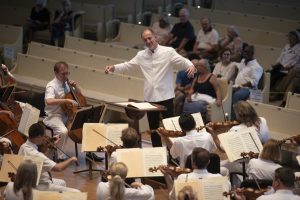
The mystery of why Schubert never completed his Eighth Symphony has been the subject of much scholarly debate, and the consensus seems to be that after writing his first six symphonies that hewed to fairly conventional classical structures, Schubert suffered a kind of artistic crisis — and it certainly couldn’t have helped that he also contracted syphilis. It is theorized that he was blocked by comparing himself to Beethoven, then a towering musical figure at the height of his renown. Schubert had sketched out a Seventh Symphony and then set to work on the eighth, composing two movements and leaving a third movement in an incomplete sketch.
By the time of his death in 1828, at the age of 31, Schubert left dozens of projects incomplete or abandoned, yet he was among the most prolific of major composers. He had written more than 600 songs, nine or 10 symphonies (or sketches, depending on how you count them), 15 string quartets, two piano trios, two quintets, 21 piano sonatas, 10 operas and other incidental music for the stage, seven full masses and a whole lot more. The two completed movements of the “Unfinished” symphony show Schubert experimenting with bizarre key modulations and harmonies, in a direction Beethoven never pursued. We are left to wonder how much more Schubert would have written, and how his music would have evolved, had he not died so young.
By contrast, after a short pause (not an intermission), Milanov hopped onto the podium and dove headlong into Symphony No. 3 in F major, Op. 90 by Brahms. Hans Richter, who conducted the premiere, called this robust 1883 piece “Brahms’s Eroica,” referring to the nickname for Beethoven’s “heroic” Third Symphony. Both works open with a spirited Allegro con brio, and Milanov flung out his arms and stirred the orchestra into a full-out rendition that had the strings swirling while the brass and woodwind sections interwove those Brahmsian motives.
A particularly telling moment occurred in the third movement, Poco allegretto. The cellos introduce this throbbing minor key theme that is then handed around the orchestra and repeated again and again. This is a movement that can unfortunately become lugubrious and sentimental. But Milanov took it at a brisk pace and pushed the articulation in a fascinating way. Usually the two phrases of the main theme are played (bear with me here) Dah-dee-Daaaaah, Dah-dee-Dah. But Milanov demanded a legato that crescendoed into the second phrase with an extra surge at the top, so that it turned into Dah-dee-daaahHH-DAH-dee-dah. The difference in phrasing may seem minor, but it is just such a detail as this that turns a good performance into a great one, and demonstrates Milanov’s intelligence and refined taste.
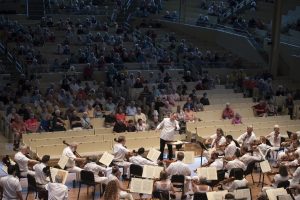
Composers have often gotten their jollies by incorporating cryptograms — sequences of notes whose letters spell out words or names. Most notably, Bach spelled out his name (in German music, B-flat was named B and B-natural was H), and Robert Schumann inserted a form of his name into his music as well. Brahms had a friend and collaborator, Joseph Joachim, whose musical motto was “Frei aber einsam” (Free but lonely). A lifelong bachelor, Brahms converted Joachim’s motto into his own theme on F-A-F, to signify “Frei aber froh (Free but happy), and sprinkled it throughout the symphony.
Alas, it must be said that three times during the evening, dogs being walked by their clearly unmusical owners, added unwelcome interruptions, and always at the quietest and most sublime moments; why can’t Chautauqua institute a dog-free No Barking Zone on orchestra nights?
Speaking of acoustical matters, while I usually prefer to sit two-thirds of the way back to enjoy the surprisingly well-blended sound in the Amphitheater, I took this opportunity to take a seat in the choral section behind and above the orchestra, an experiment I recommend to any serious listener. Of course, the sound there is dry, like being in a recording studio, so that you hear the sections of the orchestra separately, including sonic details like the slight rasp of the bows. You also miss the visceral blare of the brass section (they are sitting 15 feet below with their bell ends pointed away from you). On the other hand, you get to closely observe the interactions of the players and see the conductor from the perspective of the orchestra members; it is revelatory to watch Milanov use his gaze and facial expressions to elicit the sound he wants from his players.
Finally, it should be noted that a new element has been added to the orchestral season — program books. Handsomely edited, the 51-page booklet contains repertoire, guest artist bios and David Levy’s fine musicological notes for the opening few weeks of the season. Best of all is the list of orchestra members with a photo of each and a note about their other institutional affiliations. Highlighting each musician is a great idea that all orchestras should adopt. It’s just another reminder of the atmosphere of Chautauqua, where each individual voice contributes to the whole.
Johanna Keller received the ASCAP/Deems Taylor Award for her essays on music in The New York Times. She writes for Opera and The Hopkins Review and teaches journalism at Syracuse University’s Newhouse School.

